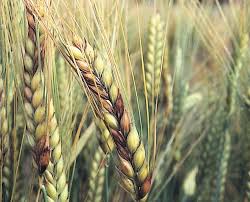IN A a wild relative of cultivated wheat, researchers have found a gene, likely delivered through horizontal gene transfer from a fungus, that drives resistance to fusarium head blight (FHB) – an intractable fungal disease devastating wheat crops worldwide.
 According to a new study, introgression of the newly identified FHB resistance gene Fhb7 in agricultural wheat confers resistance to the disease without a decline in overall yield.
According to a new study, introgression of the newly identified FHB resistance gene Fhb7 in agricultural wheat confers resistance to the disease without a decline in overall yield.
The findings suggest a possible solution for breeding Fusarium-resistant cereal crops.
And they are surprising as there is little evidence for horizontal gene transfer events involving nuclear DNA transmission from fungi or other eukaryotes.
FHB is a fungal disease of wheat caused by pathogenic Fusarium fungi.
Outbreaks of the disease are widespread worldwide and increasing in prevalence due to climate change and agricultural practices that promote infection.
In addition to greatly reduced wheat yield, the disease is also associated with widespread contamination of the crop by mycotoxins produced by the fungi, which promote infection and have harmful toxic effects on human and animal health.
Because contaminated grain cannot be sold for food or feed, FHB infections often result in severe economic losses.
Hongwei Wang and colleagues assembled the genome of Thinopyrum elongatum, a wild wheatgrass relative of modern wheat known to harbour Fusarium resistance.
From this reference genome and using years’ worth of genetic mapping data, Wang et al. identified and cloned the Th. elongatum FHB resistance gene Fhb7, which confers broad resistance to Fusarium species by detoxifying their virulent mycotoxins.
Strikingly, the authors found no known homolog of Fhb7 in the entirety of the plant kingdom but discovered its coding sequence shares notable overlap with a species of fungus, Epichloë aotearoae, known to infect grass.
The findings suggest that Fhb7 in the Th. Elongatum genome may owe its origin to the fungus via horizontal gene transfer.
In further analyses, the authors show that engineering Fhb7 into wheat via distant hybridisation makes wheat of a variety of backgrounds resistant to both FHB and crown rot, without affecting yield.
Source: American Association for the Advancement of Science
https://www.eurekalert.org/emb_releases/2020-04/aaft-fgi040620.php



HAVE YOUR SAY